Protected Under
Antiquities Act 1975
31°37'21.7"N 74°17'59.1"E
![]()
On the UNESCO World Heritage Site Tentative List
Antiquities Act 1975
The Akbari Serai, with its 180 cells and grand Chahar Bagh layout, served as a majestic lodging space for travelers visiting the tomb of Emperor Jahangir
The Best Time to Visit Punjab Province is Year long as it has bearable Cold winters and Hot Summers. However, Summers can get really Hot and precautions are recommended during Daytime visits.

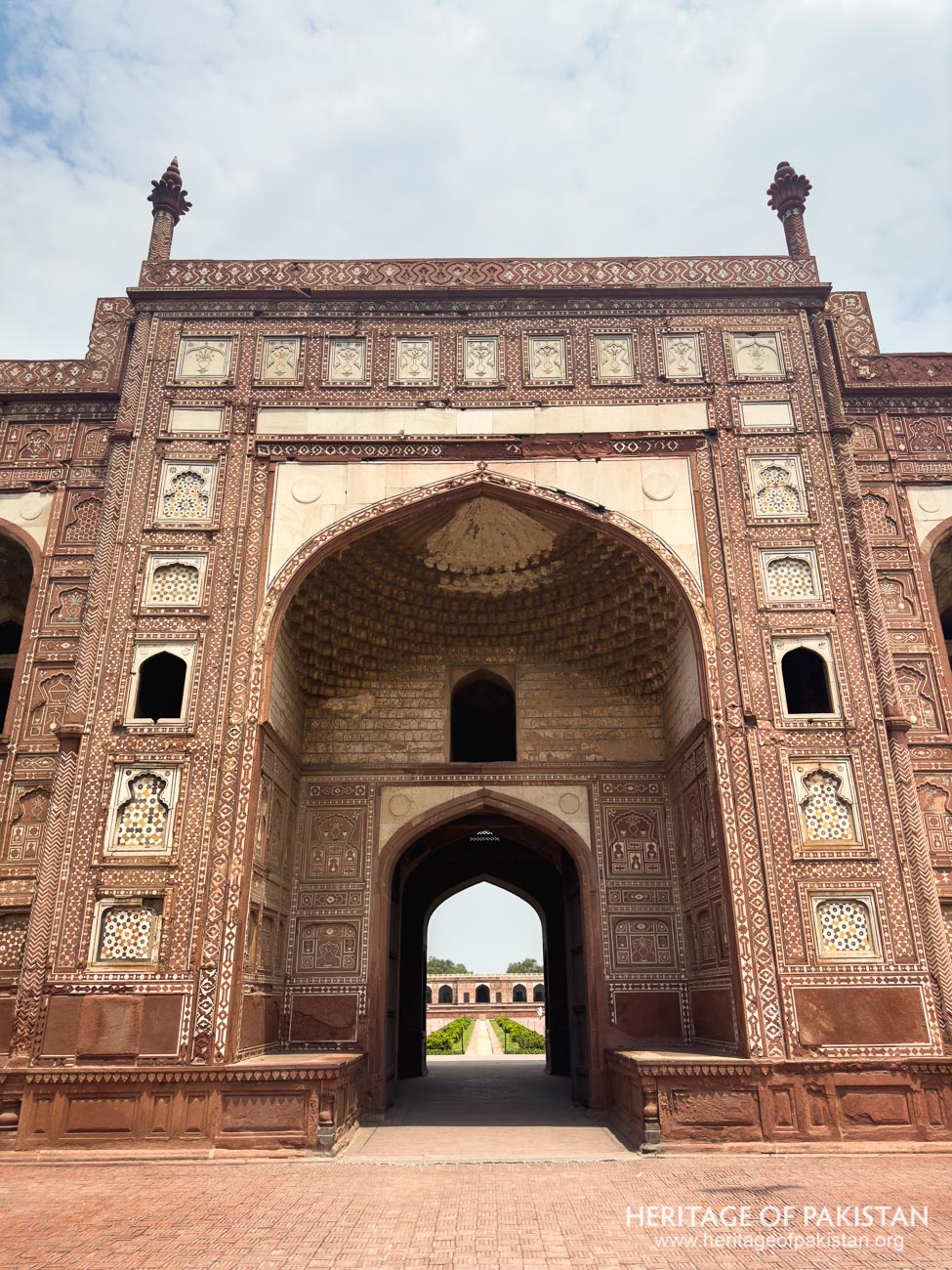
The Akbari Serai is an expansive Mughal Era court and garden, which serves as an essential architectural prelude to the tomb of Emperor Jahangir in Shahdara, Lahore. This enclosure was historically referred to as, Jilau Khana-e-Rauza ("Court Attached to the Mausoleum"), and was designed as a symbolic and functional space leading into the mausoleum complex. Reflecting the Mughal Chahar Bagh, or four-part garden style, the Serai embodies the Islamic concept of paradise with its symmetrical layout, lush greenery, and structured pathways. This Chahar Bagh garden is also reflected in the Tomb of Jahangir, which is divided into Sixteen squares.
The garden of the Akbari Serai is encircled on all four sides by small chambers or cells, which historically provided lodging for travelers, pilgrims, and caretakers who were part of the mausoleum's daily activities. These cells or rooms are 180 in number, and supported the Serai's dual function as both a space of transition into the sacred tomb and a resting area for visitors. At present, the Serai's main gate, located on the southern side, serves as the primary entrance to the complex, guiding visitors through a carefully curated spatial experience before they enter the mausoleum itself.
Two prominent gates define the entrances to the Akbari Serai: one on the southern side, which serves as the main entry point, and a second on the northern side, which remains closed. This symmetrical arrangement not only enhances the architectural balance of the structure but also reflects Mughal preferences for harmonious and symmetrical design. To the east, the gateway leading directly to Emperor Jahangir’s tomb stands as a monumental example of Mughal craftsmanship. Constructed with red sandstone and adorned with intricate pietra dura (parchin kari) inlay of white marble, this gate showcases exquisite floral and geometric patterns typical of Mughal aesthetics. A remarkable muqarnas (honeycomb) vault embellishes the entrance. The gate functions as an aesthetically pleasing threshold between the space of the Serai and the sacred interior of the tomb complex.
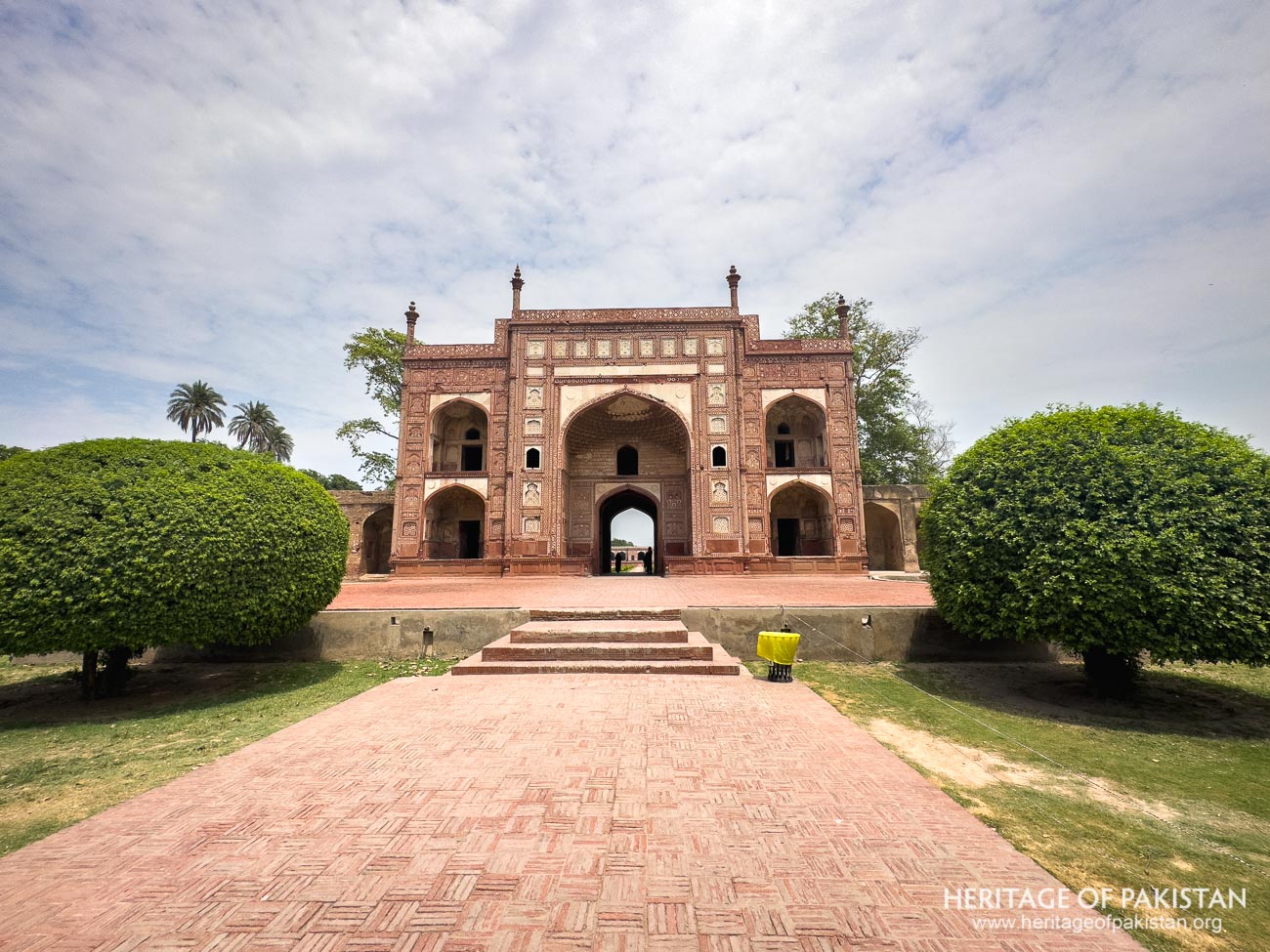 Akbari Serai, Shahdara Lahore
Akbari Serai, Shahdara LahoreOn the western side of the Serai, a mosque with three large domes serves as an additional focal point within the structure. This mosque once accommodated travelers and the resident caretakers of the complex, offering a space for religious observance and reflection. Additionally, a small side entrance within the mosque provides current access to the nearby tomb of Asif Jah, Jahangir’s brother-in-law and a notable figure of the Mughal court. Asif Jah was the brother of the famous Empress Nur Jahan, beloved wife of Emperor Jahangir.
The Akbari Serai’s history of utilization and preservation underwent significant changes during the colonial period. Following the British annexation of Punjab, the British Army briefly occupied the Serai's grounds, recognizing its strategic location. Subsequently, the British repurposed the Serai as a depot for the North Western Railway. As documented in the Gazetteer of the Lahore District 1893-1894, the British administration recognized the cultural value of the Shahdara Gardens and spent approximately Rs. 15,000 on restoration efforts from 1882 onward. These restorations included structural repairs and the re-embellishment of facade work, acknowledging the importance of preserving the site's architectural heritage even as it was repurposed for practical needs. The Gazetteer further notes that revenue from the sale of produce from the Serai's gardens was used to fund its maintenance, demonstrating a pragmatic approach to heritage conservation under British rule.
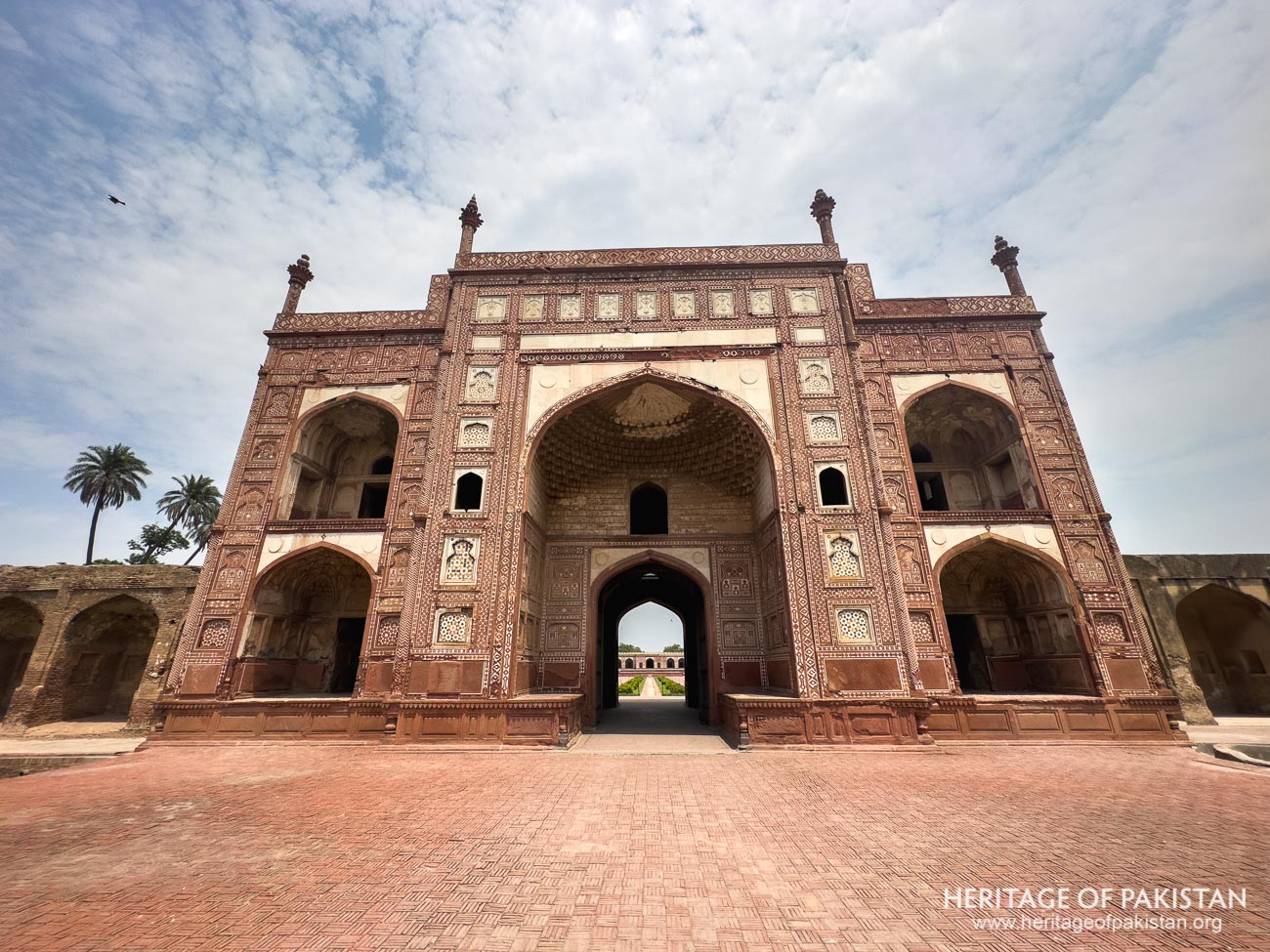 Entrance from Akbari Sarai to Jahangir's Tomb
Entrance from Akbari Sarai to Jahangir's TombSince Pakistan’s independence in 1947, the Government of Punjab has undertaken numerous restoration initiatives to protect and preserve the Akbari Serai and its surrounding gardens. Under the Antiquities Act of 1975, the complex has been designated as a protected monument. Restoration efforts have focused on maintaining both the structural integrity and aesthetic details of the complex, including landscaping, and refurbishment of decorative elements.
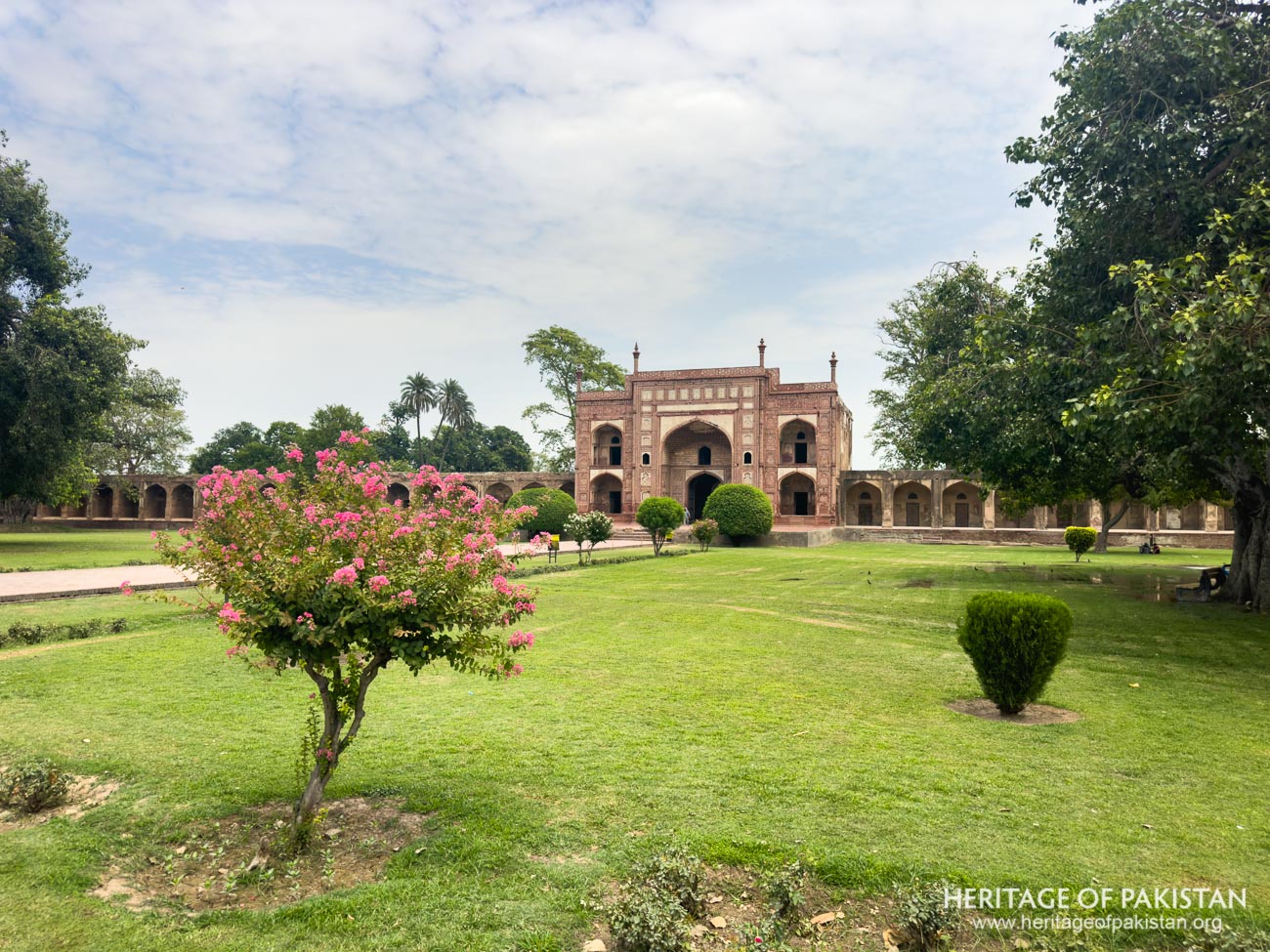
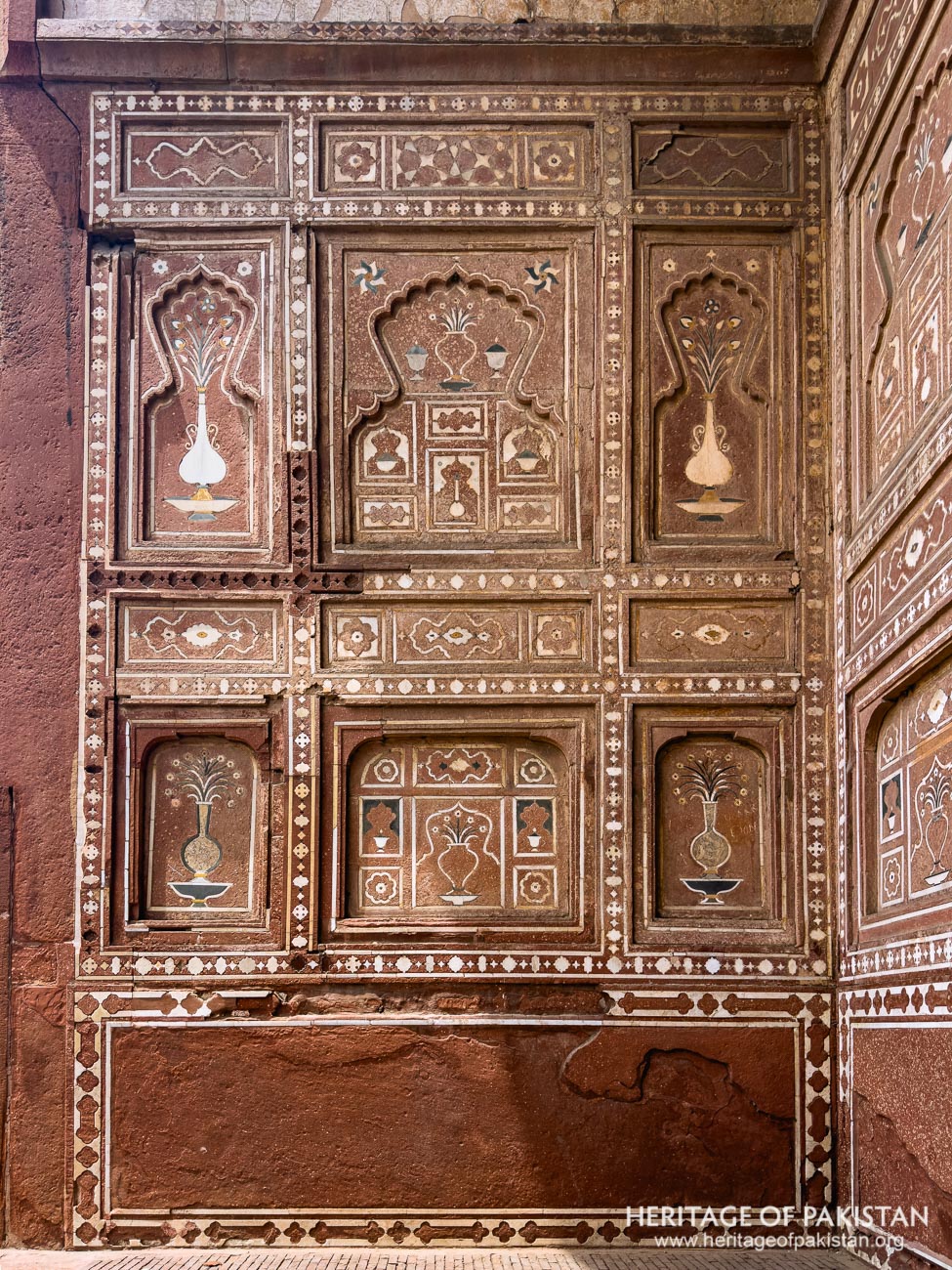
The Akbari Serai is a spacious open courtyard surrounded by rows of cells. This expansive courtyard is bordered on all sides by a raised terrace, on which are constructed 180 small cells, each fronted by a verandah and connected by a common passage. Designed in the traditional Chahar Bagh, or four-part garden style, the Serai exemplifies the Mughal emphasis on symmetry and spatial harmony. There are 3 gates in the Akbari Serai. The Southern Gate functions as the main entrance of the Jahangir Tomb Complex. On the opposite side of this gate on the northern side is another main gate and entrance to the Akbari Serai. This gate remains permanently closed. On the Eastern side of the Akbari Serai lie the beautiful gage leading to the Tomb of Emperor Jahangir. This beautiful gate is a red sandstone structure decorated with Pietra Dura work of white marble inlay. The Arched entrance is decorated with an intricate honey comb structure known as Muqarnas. The purpose of this design was not only aesthetic but also functional, as the cells served as quarters for accommodating travelers, pilgrims, and caretakers associated with the adjacent mausoleum complex.
The two primary gateways serve both functional and symbolic purposes within the structure. One gate functions as the main entrance to the mausoleum complex, guiding visitors into the Serai, while the other leads directly to Emperor Jahangir’s tomb. These gateways are adorned with intricate frescoes and ghalibkari (stucco tracery) work, demonstrating the Mughal attention to detail and artistry. Each gateway represents a transitional point, directing visitors through the sacred spaces of the complex. The southern gate provides access to the Serai and the larger complex, while the eastern gate is aligned to offer entry towards Jahangir’s tomb and connects indirectly to the tomb of Asif Khan.
Within the Serai complex, a mosque stands as a vital structure, serving the spiritual needs of travelers, pilgrims, and those involved in maintaining the complex. The presence of this mosque highlights the Mughal architectural tradition of integrating religious spaces within secular complexes, creating a multifunctional environment that catered to both the physical and spiritual well-being of its occupants.
In recognition of its architectural and historical significance, the Akbari Serai, along with the Tombs of Jahangir and Asif Khan, was inscribed on UNESCO’s tentative list of World Heritage Sites in 1993. This designation underscores the site’s cultural value and highlights the need for preservation efforts to protect and maintain its historical and architectural integrity for future generations.


Discover the Akbari Sarai's image gallery and immerse yourself in photographs

All Photographs by Syed Noor Hussain and Sania Azhar.
All Rights Reserved. Photos may be used for Non-Commercial, Educational, Artistic, Research, Non-Profit & Academic purposes.
Commercial uses require licensing agreement.


Add a review